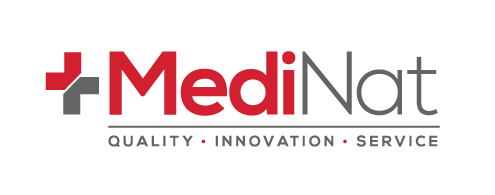
Ketamine Use Rising in Regional Australia: What the Latest Wastewater Data Reveals
Share
The Australian Criminal Intelligence Commission (ACIC) National Wastewater Drug Monitoring Program – Report 24has revealed an emerging trend: ketamine use is increasing across Australia, with a noticeable rise in regional and rural areas.
While ketamine has legitimate medical and veterinary applications, the new data shows that recreational misuse is expanding beyond capital cities, signalling a concerning shift in Australia’s drug landscape.
Record Levels Detected in Wastewater
Between August 2023 and October 2024, wastewater analysis found record-high levels of ketamine in both capital city and regional testing sites.
-
Capital city highs: Peak readings were recorded in Darwin and Sydney.
-
Regional growth: Rising levels were detected across Queensland, South Australia and Victoria.
-
Widespread presence: Over 90% of monitored sites now report detectable ketamine levels.
These findings suggest that ketamine use is no longer confined to urban nightlife. It’s spreading geographically and reaching new demographics, mirroring patterns seen in the UK, Europe and New Zealand.
What Is Ketamine and Why Is It Misused?
Ketamine is a dissociative anaesthetic used in medicine for pain management, emergency anaesthesia and, more recently, controlled mental health treatments.
However, when used recreationally, it can cause:
-
Impaired coordination and motor control
-
Hallucinations, dissociation and confusion
-
Loss of consciousness or memory
-
Long-term bladder and kidney damage
Because its effects are short-lived, some users falsely perceive ketamine as “low-risk” — but the drug’s unpredictable and disorienting effects make it especially dangerous in workplaces or when driving.
Rising Trends in Regional Australia
Historically, substance misuse trends have emerged first in major cities. The latest ACIC report shows this pattern is changing: regional communities are now experiencing sharp increases in ketamine use.
Possible contributing factors include:
-
Easier online access and postal delivery of illicit substances
-
Festival tourism and nightlife events moving into regional areas
-
Limited treatment and harm-reduction services outside major centres
-
Misleading public perception of ketamine as a “therapy drug”
This combination of factors makes rural communities particularly vulnerable to rapid changes in drug use patterns.
Implications for Workplace Drug Testing
Under the Australian Standards —
-
AS/NZS 4760:2019 (oral fluid) and
-
AS/NZS 4308:2023 (urine) —
ketamine is not currently part of the standard drug testing panels.
However, given the upward trend, many organisations in transport, construction, healthcare, mining and logistics are now adding ketamine to their extended testing panels.
This proactive step helps employers adapt to emerging risks and ensure that their drug and alcohol policies remain relevant, compliant and effective.
Why Wastewater Data Matters
Wastewater monitoring is one of the most reliable, population-wide tools for tracking real-world drug consumption.
The ACIC’s findings show that ketamine use is now firmly established in both metropolitan and regional communities, offering policymakers and employers valuable early warning of changing trends.
For workplaces, staying informed allows for early intervention — before risks translate into incidents or lost productivity.
MediNat’s Perspective
At MediNat, we work closely with healthcare providers, industry partners and workplace safety teams to provide reliable and compliant drug testing solutions.
Our oral fluid and urine drug testing devices can be configured to include extended analyte panels — including ketamine — for forensic, workplace or clinical applications.
We also provide:
-
AS/NZS 4308:2023 and AS/NZS 4760:2019 compliant testing kits
-
Chain-of-custody and confirmatory testing support
-
Forensic-use and workplace safety configurations
-
Expert advice on custom panel selection
Conclusion
The rise of ketamine use in regional Australia highlights how quickly drug markets evolve.
Employers, health professionals and policymakers must remain agile, using data-driven evidence to guide prevention, detection and safety strategies.
Keeping up with these changes is essential for maintaining safe and productive workplaces — and wastewater monitoring continues to be one of the most effective early indicators of emerging risk.
Key Takeaways
-
Ketamine detections are increasing across both capital and regional Australia.
-
Recreational use poses serious safety risks, especially in workplaces.
-
Employers should review testing programs and consider extended panels.
-
Wastewater monitoring provides early, evidence-based insights into new drug trends.
MediNat
Specialists in workplace and clinical drug testing solutions.
📞 Contact our team to discuss ketamine testing options or extended panel configurations.
